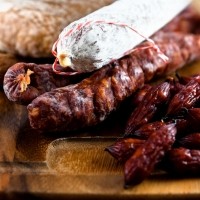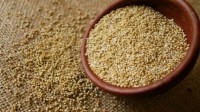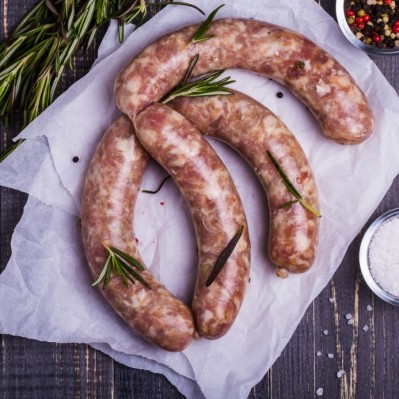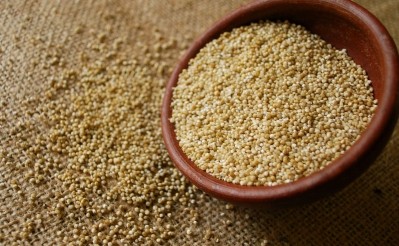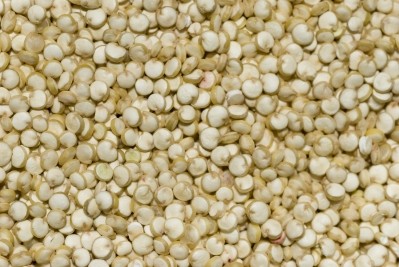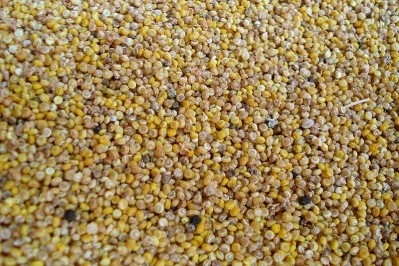Less fat, more protein: Quinoa can replace fat in dry-cured sausage
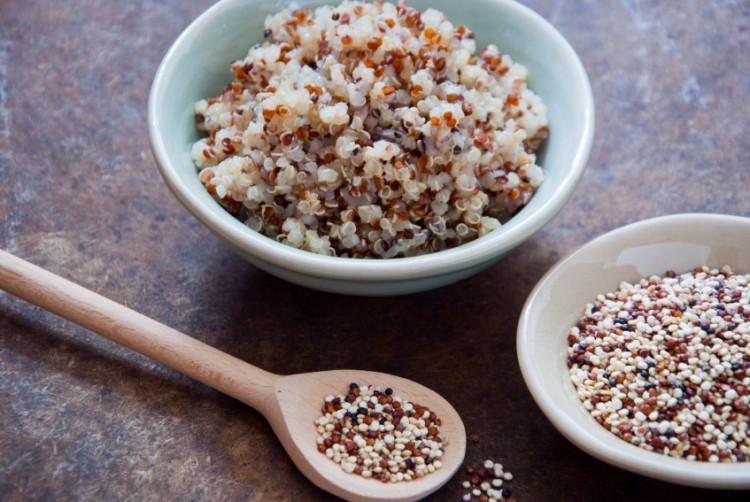
The researchers say that replacing up to 85% of the fat content with boiled quinoa could be a “feasible strategy” for industry.
“Fat replacement resulted in changes in composition, texture, and flavour of sausages. However, consumer tasting showed no differences in preference between reduced-fat and full fat sausages,” they write.
“These reduced-fat sausages are potentially appropriate to be produced in regions where there is low supply of pork fat or where consumers demand reduced-fat meat products. The use of quinoa as fat replacer provides to sausage manufacturers an added value due to their excellent nutritional quality.”
Dry cured sausage, such as charcuterie products, chorizo and salami, can typically contain around 30% to 50% fat which plays an important role in determining their sensorial characteristics in terms of appearance, texture and flavour.
Methods for reducing the fat content can include increasing the proportion of lean meat used in the formulation – although this tends to result in increased dryness and hardness and darkened flavours - or adding non-lipid fat replacers.
Previous research has looked at the efficacy of using ingredients such as inulin, cereal or fruit fibres cellulose gel or carrageenan. Since starch can also be used, the Spanish researchers from the University of León, decided to test the efficacy of quinoa, a starchy grain.
The method
The researchers reduced 50% of the fat in one sausage and 85% in another by replacing it with boiled quinoa. One sausage with a normal fat content - 30 g of pork back-fat per 100 g of sausage mix - was used as a control. The sausage meat also contained fresh garlic, paprika, black pepper cumin and sodium nitrate.
After ripening, portions were taken for microbial, colour and textural analyses.
Sensory testing was performed by 12 panellists in a testing room under soft white lighting. The panellists had previously been trained in sensory analysis
testing and quality traits of dry cured sausages, and evaluated the sausages' texture and flavour. They were asked to pay specific attention to
juiciness, ripened flavour and pungent flavour, and were given five sausages purchased in retails markets to test as well.
The scientists found that replacing fat with quinoa increased the protein content of the sausages but did not affect microbial counts.
Reducing fat in sausages can have varied effects on colour, depending on the fat replacer used, ripening conditions and the degree of meat pigment oxidation, write the researchers, but here they found adding quinoa to the mix did not significantly affect the colour.
However participants reported higher hardness and higher chewiness in the low-fat sausage compared with the half-fat version or the control, as well as less juiciness.
“[This is] because fat melts in the mouth being a source of juice from the food, and contains aromatic compounds that stimulate salivation.
“Finally, in spite of the differences found in the descriptive sensory analysis, fat reduction did not affect the overall acceptability of reduced-fat dry-cured sausages with respect to controls.”
Source: Journal of Food Science
“Partial Fat Replacement by Boiled Quinoa on the Quality Characteristics of a Dry-Cured Sausage”
Authors: Ana Fernández-Diez, Irma Caro, Amaya Castro et al.
First published online : 21 July 2016, DOI: 10.1111/1750-3841.13393
